Sickleholme is claimed to be the only 18-hole course in the Peak District. We are assured of fine views of the Hope Valley and, as is readily apparent from a first view from the clubhouse terrace, there will be some hill climbing! The club dates from 1898 and the authoritative Cornish and Whitten suggest that it is a rebuild by Tom Williamson, responsible for many of the better courses in the East Midlands. A quick glance at the course map suggests that most holes are parallel, running up and down a hillside, but the routing has been cleverly arranged to avoid any sense of monotony, taking play, ever changing, from one part of the property to another. Another brilliant aspect of the routing is the way in which such variety of individual holes has been crafted out of such a compact site.
Total length is 6064 yards, to a par and standard scratch of 69, but yardages are largely irrelevant in such hilly country. Many greens on uphill holes have false fronts or aprons, with the first-timer leaving too many approaches short. A good number of the downhill holes favour the ground game, calling for a well-weighted running approach. The short holes are seriously defended, bunkering is surprisingly prominent on such a site, and moundwork and shaping is used to assist the eye from afar and to dictate strategy around the greens. As so often on an upland site the surrounding hills dwarf the contours on the greens, leading to many a misread putt, particularly downhill.
1. 274 yards par 4.
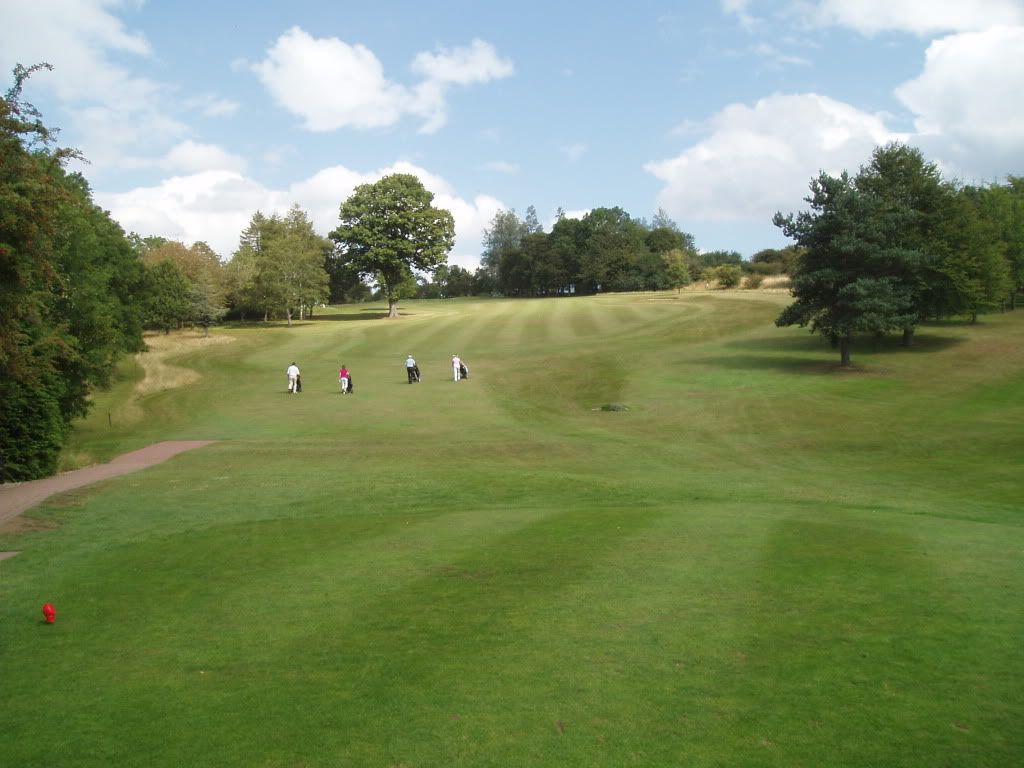
The camera lies! That is a much steeper hill than it appears here. The main problem is the large tree on the left of the fairway. Get behind that and you are dead. A fairway bunker on the right awaits the shorter hitter who plays too conservatively from the tee. Big hitters (who invariably hit the ball high) can get close enough to leave a gentle pitch.

This gives a better impression of the steepness of the climb.
2. 420 yards par 4.

This is a serious par 4, playing uphill, although not as steeply as the previous hole. Trees line the fairway on the right and there is a big right to left cant to the fairway, greater where the shorter hitters land.
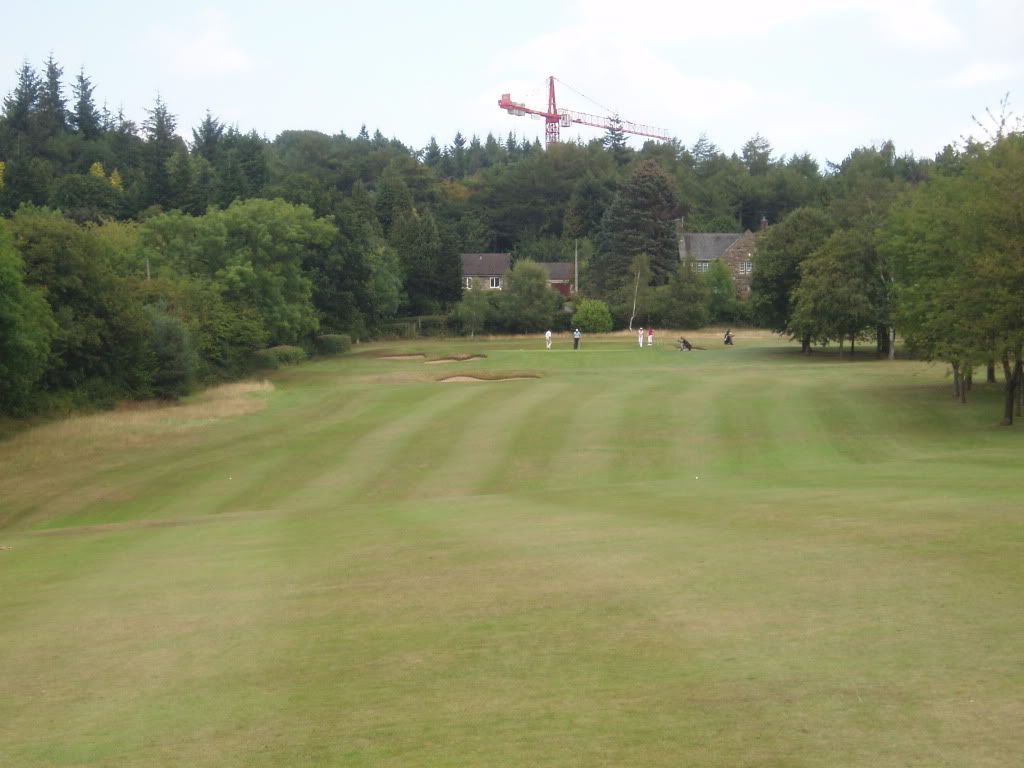
At what will we aim when the crane comes down? Bunkers guard the approach and a false front deceives on the approach.
3. 451 yards par 4.
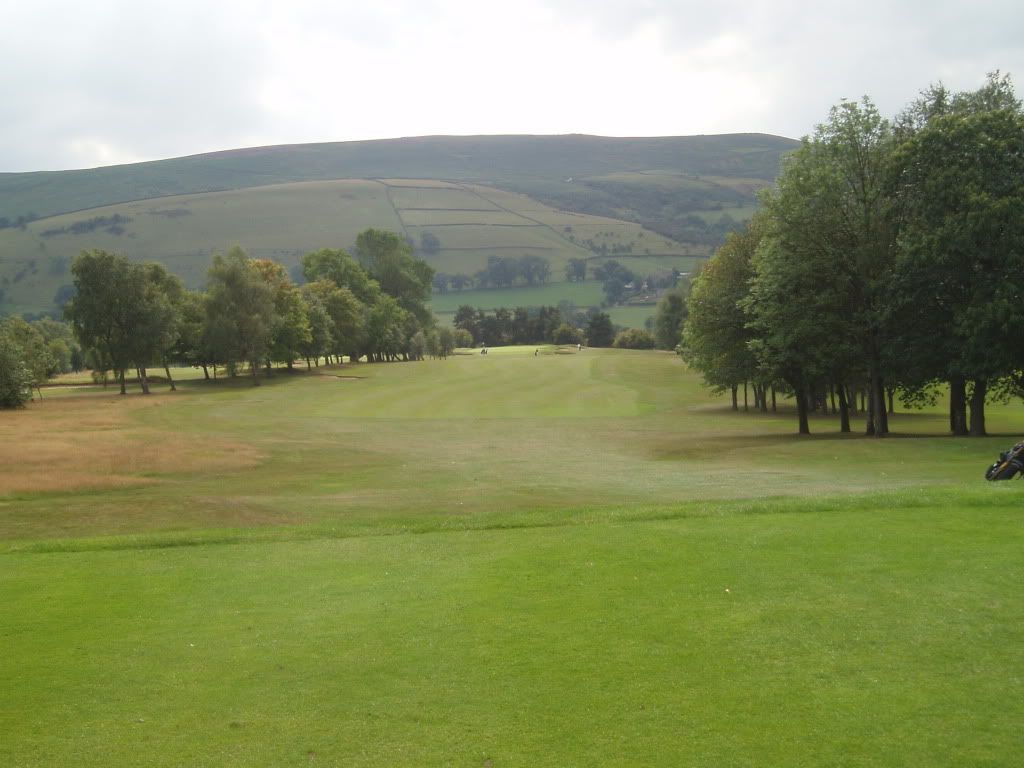
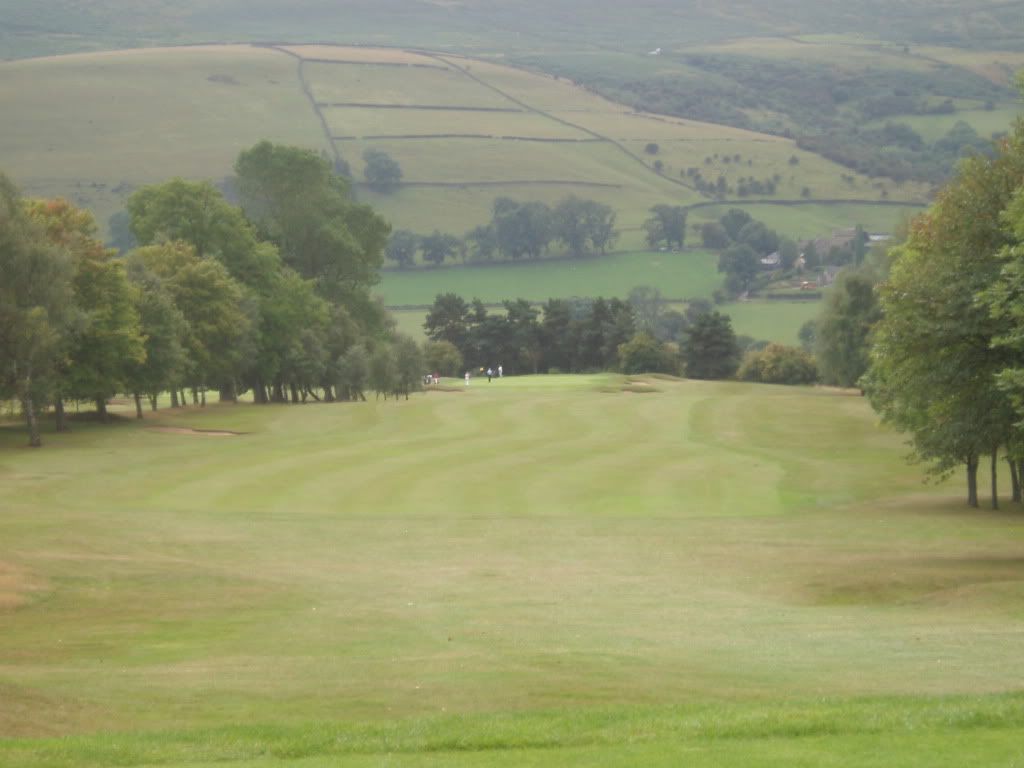
A welcome sight – a downhill tee shot to a generous fairway.
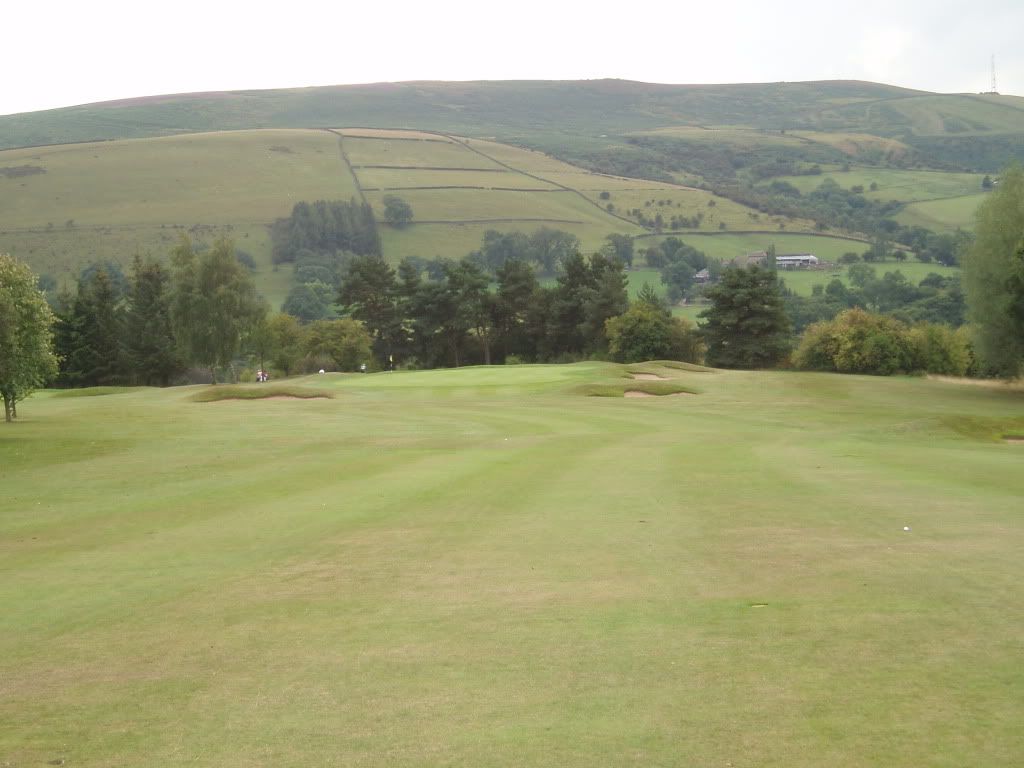
The bunkers and moundwork give the required definition to frame the green against the bigger backdrop of the hills.
4. 165 yards par 3.
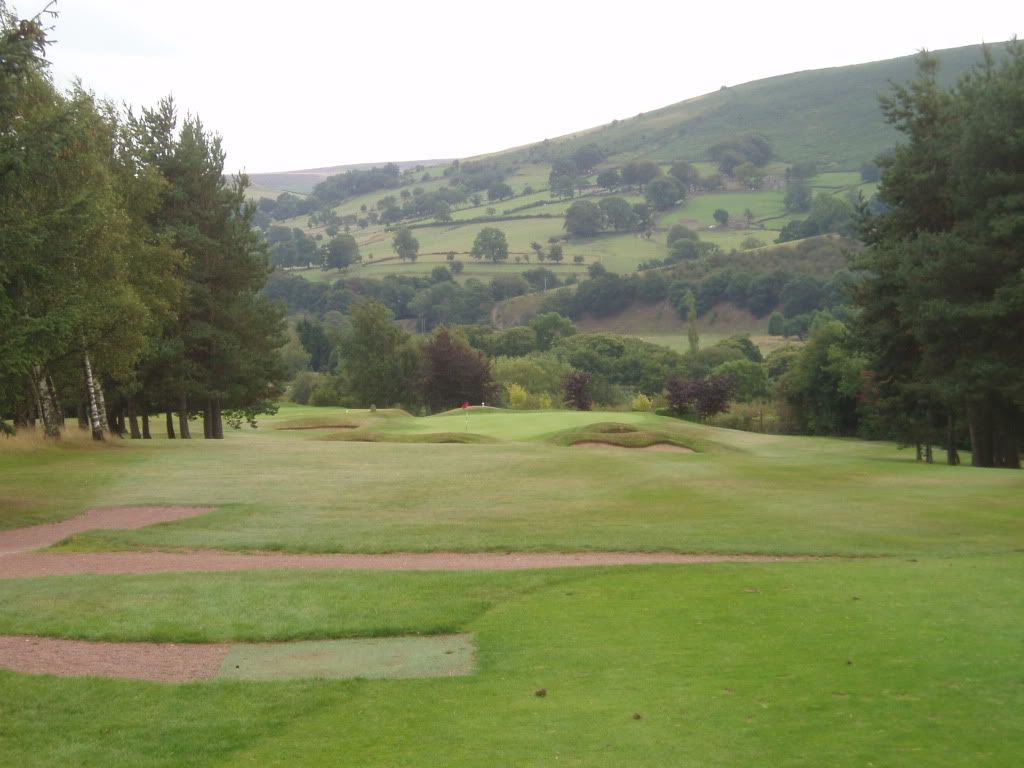
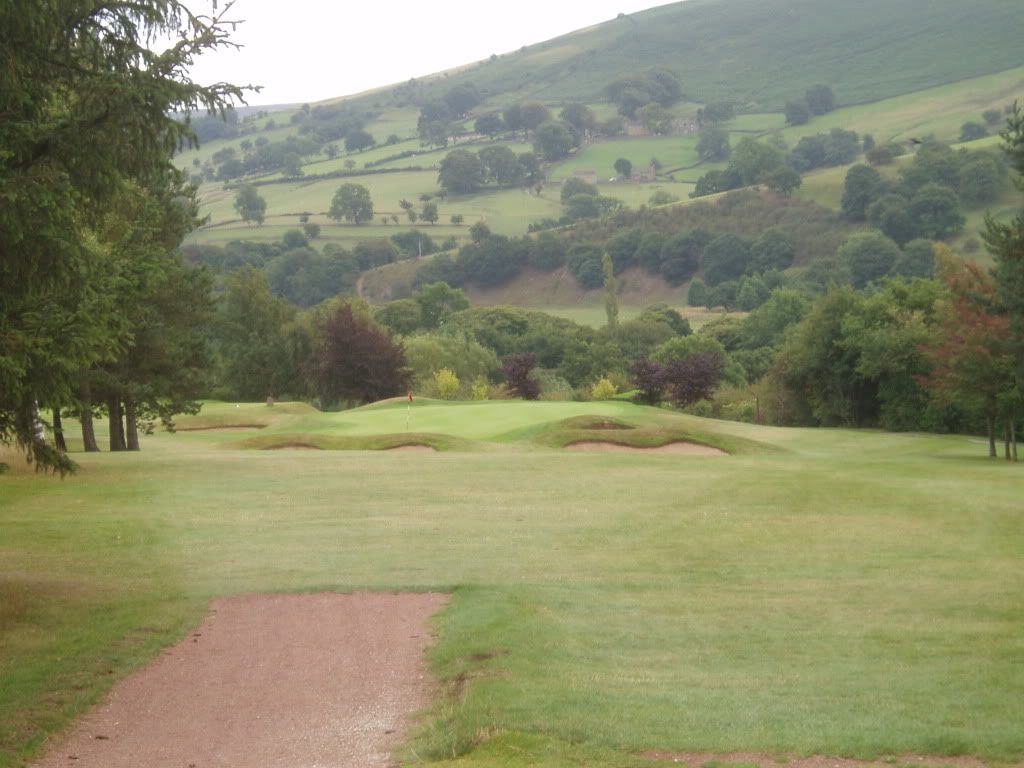
A charming downhill one-shotter to a green angled slightly from left to right with a narrow entrance between bunkers. The gloriously old-fashioned cross-bunkers remind of a former age when the topped tee shot was considered a heinous crime!

These are not cosmetic bunkers. They are serious.
5. 285 yards par 4.
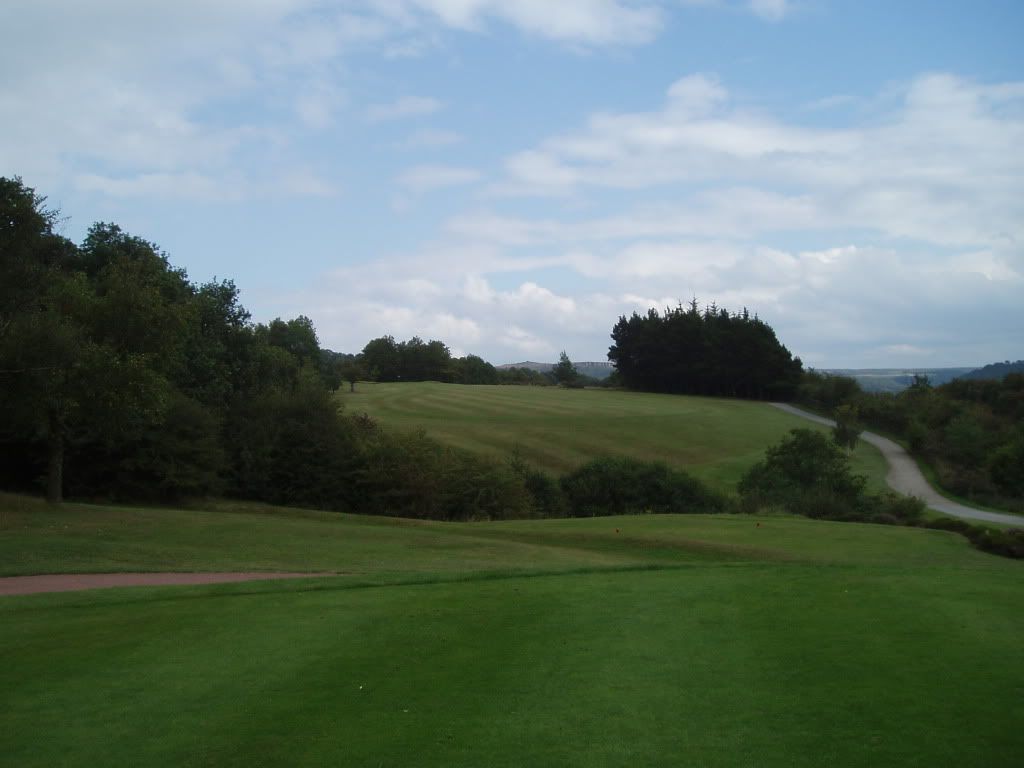
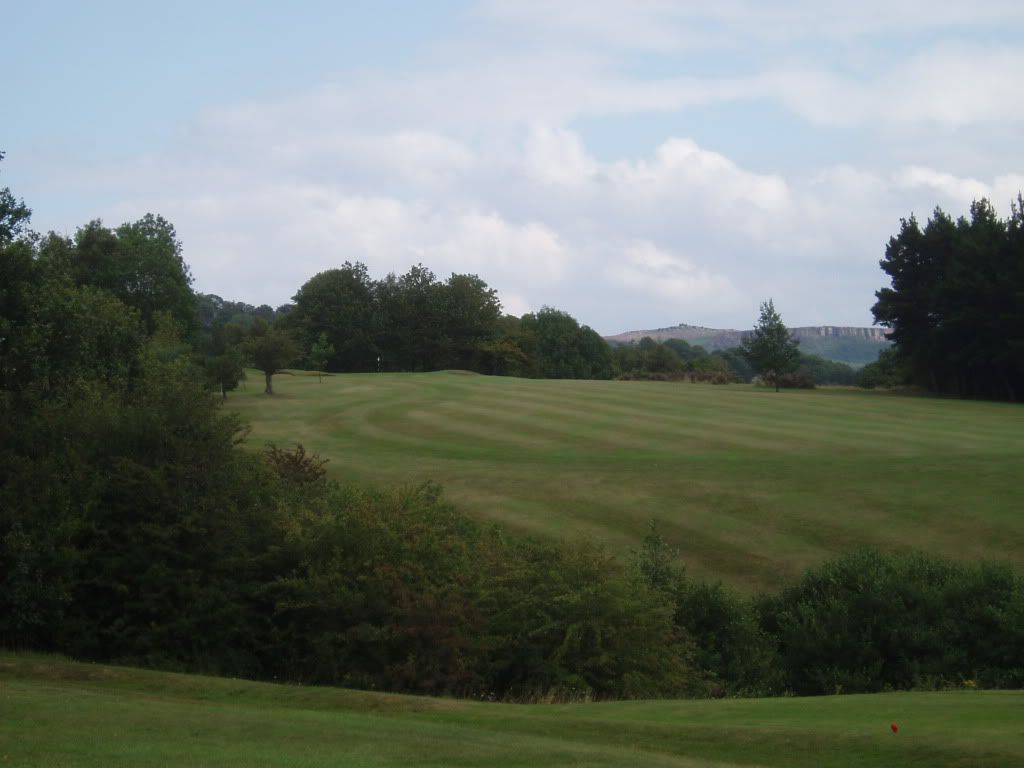
From the 5th tee the prospect is inviting with a shot across an abyss to a fairway which climbs significantly while all the time moving to the left.

Trees behind the green help distance judgement. Without them this would be a model skyline green.
6. 452 yards par 4.

It’s not such an inviting prospect from down here! The tee shot is made to a fairway which curves inexorably to the right, affected by its left-to-right lean.
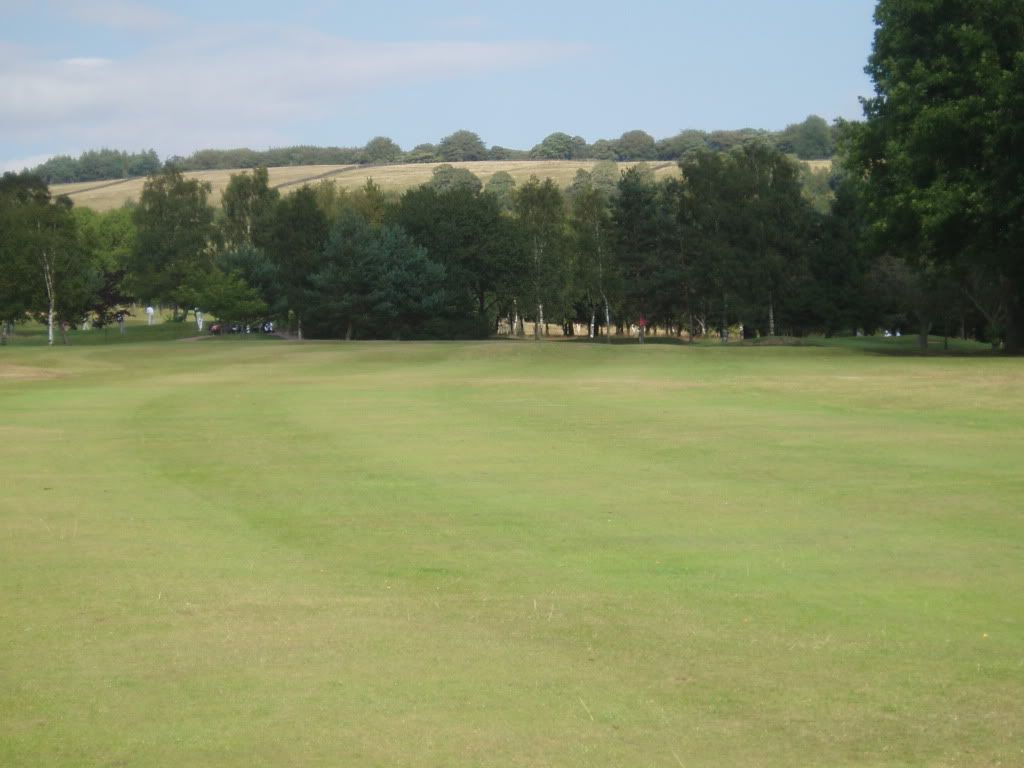
The curve continues as the hole unfolds.

Against the background of silver birches it is quite difficult to locate the flag from a distance, with the 10th green and its passing traffic in the background.
7. 156 yards par 3.
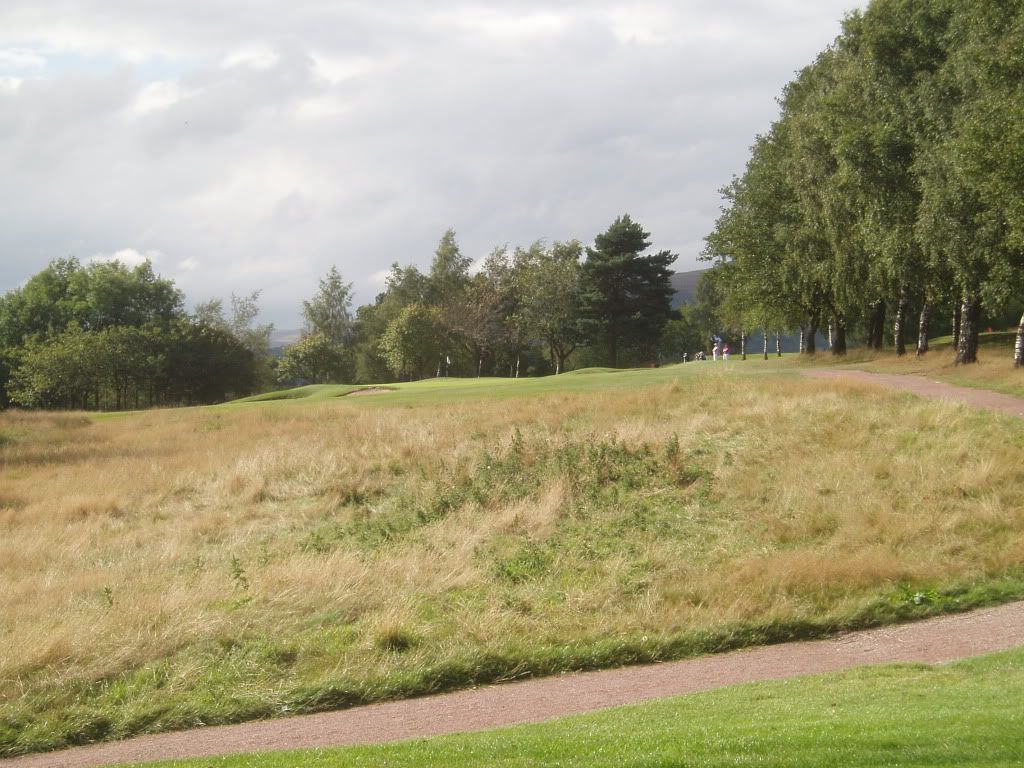
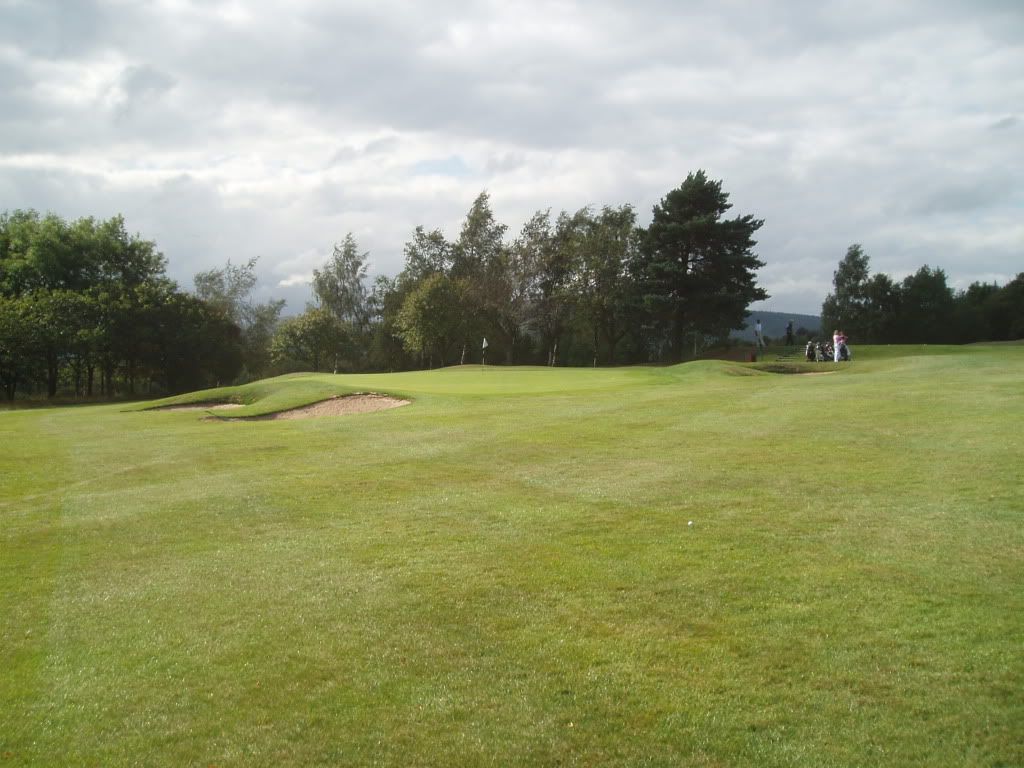
A tightly bunkered entrance to a green angled slightly from right to left calls for precision from the tee. Here we on high ground and the wind is likely to be straight into our faces or from about 10 o’clock, just to keep us on our toes.
8. 408 yards par 4.
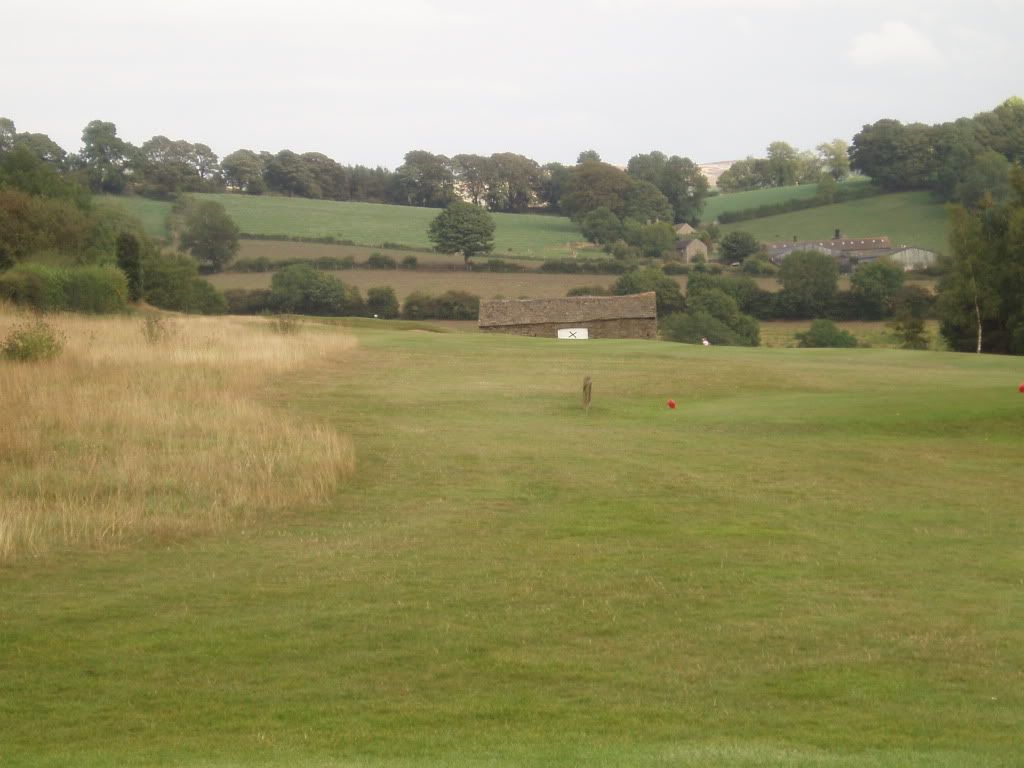
A perplexing tee shot for the first time visitor. A cross on the distant hut would seem to be the line, but where does the fairway go after that?
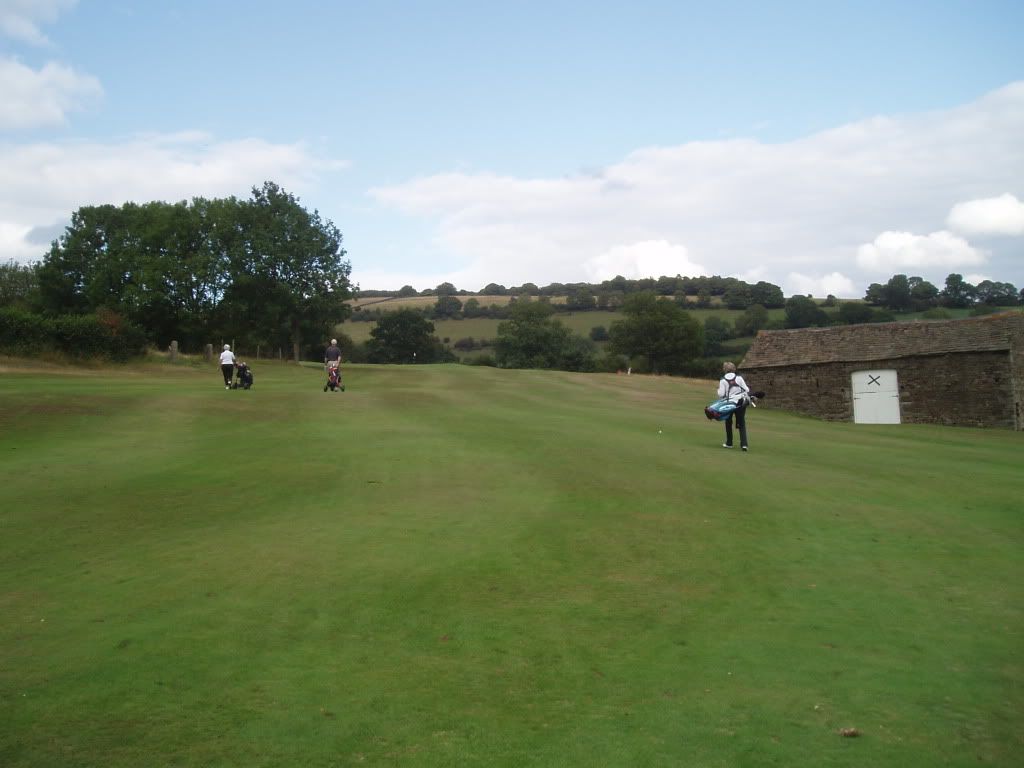
It curves round to the left, somewhat uphill towards the green. This much we learned from the course planner guide, but we did not concur with their yardages!
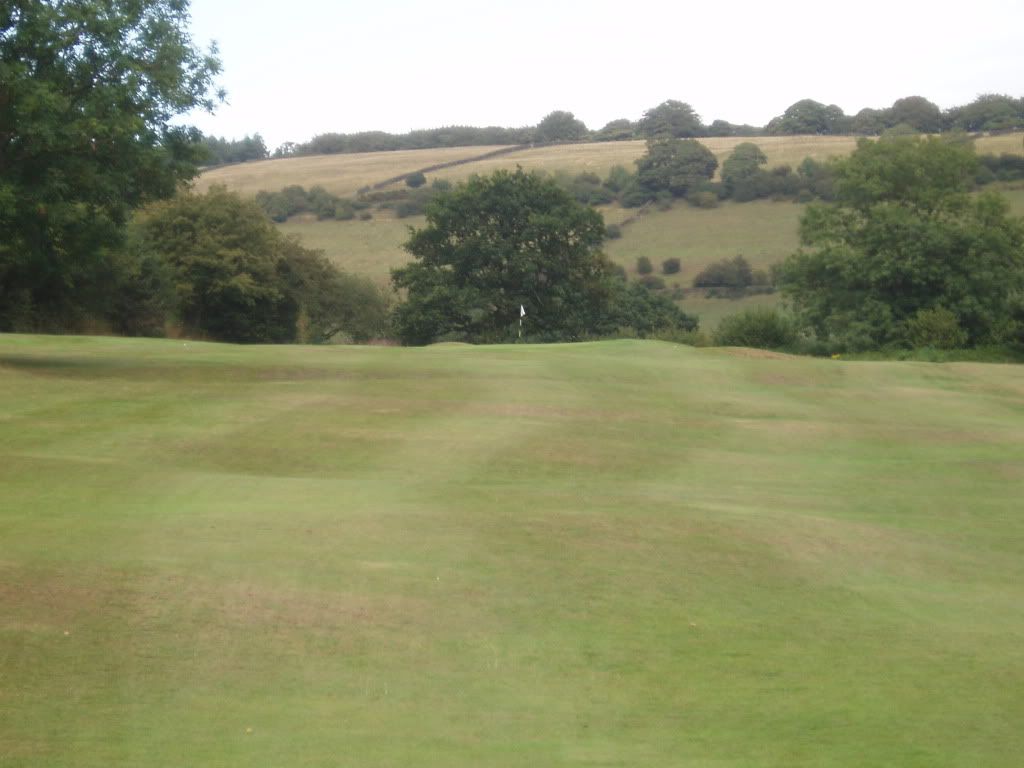
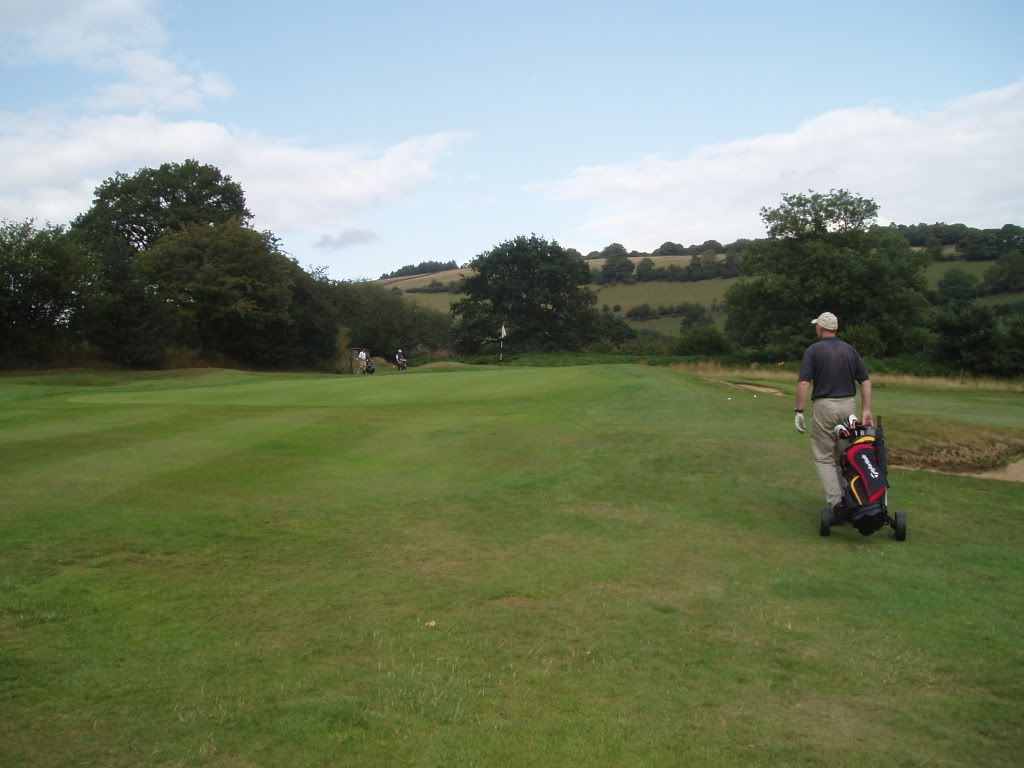
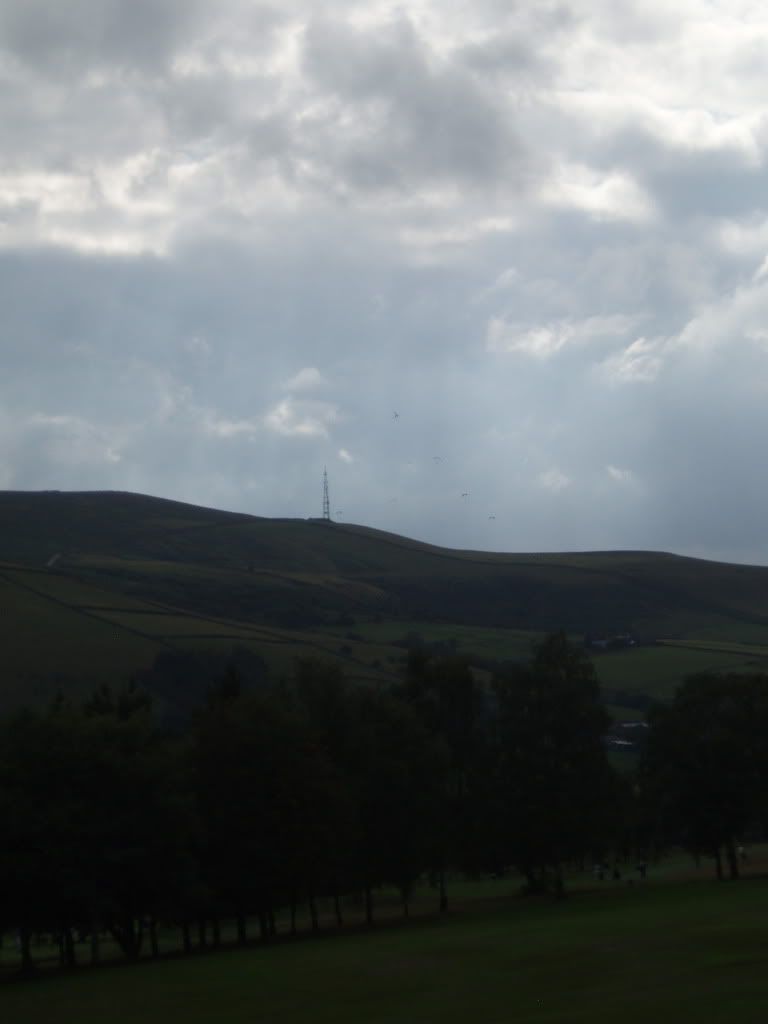
This is hang-gliding territory.
9. 396 yards par 4.

Another appetizing downhill drive. But beware! There is a stream down there, running diagonally across the fairway.
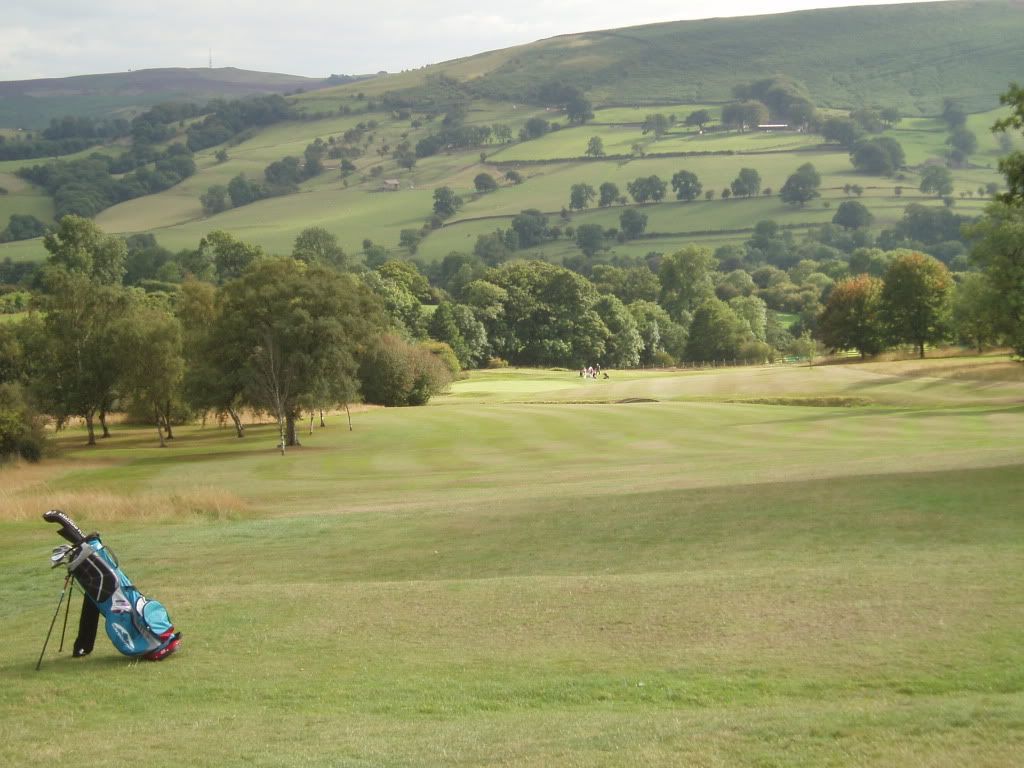
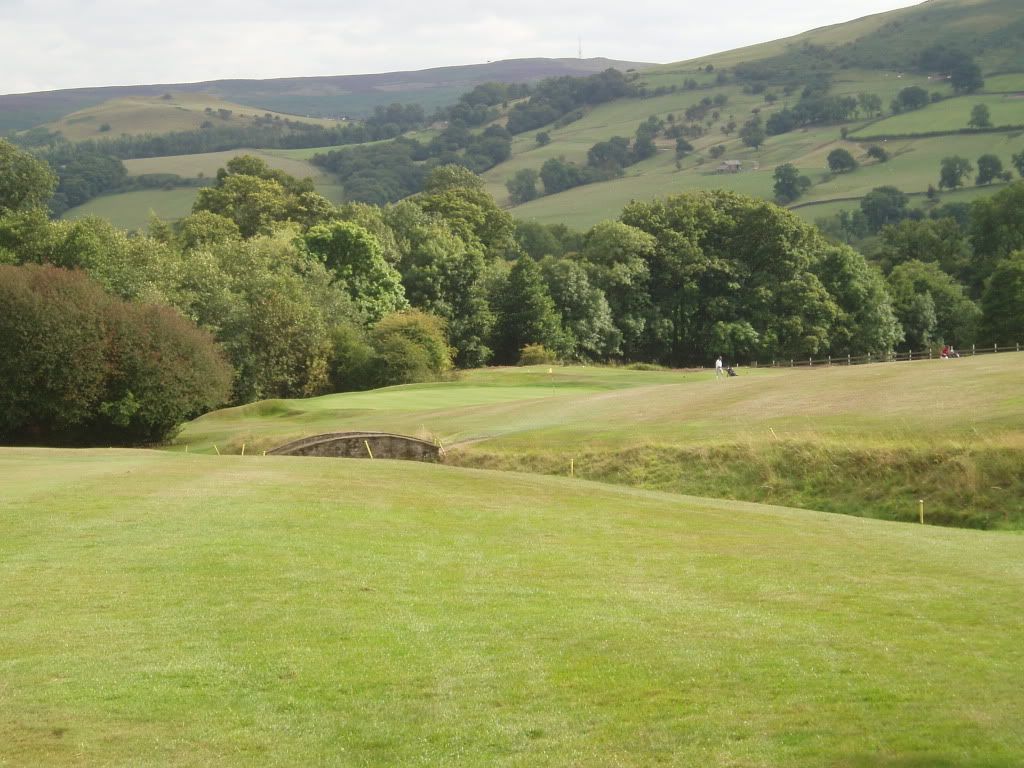
Now it is visible. With trees close on the left, sloping ground on the right, plus the stream, rescuing a poor drive is no easy matter.